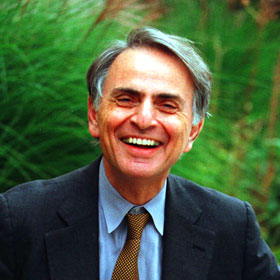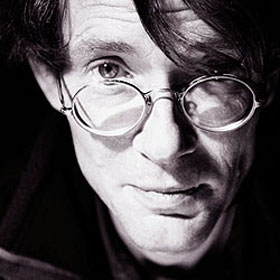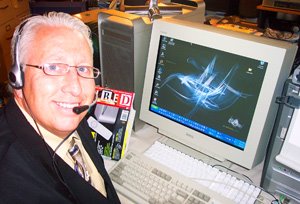Quantum Leap!
:: Michelle Simmons is among the physicists racing to keep us computing by making the Quantum Computer a reality!
++ Extreme Tech: Michelle Simmons / Centre for Quantum Computer Technology
As the limits of traditional silicon look set to hit a ceiling in the next few years, the work of Professor Simmons and other quantum computing researchers offers the best hope of continuing processing speed and improvements.
 The biggest barrier to the future of semiconductor manufacturing is the size of the transistor, which needs to shrink to fit in the same amount of space. The pathways etched into the original 4004 processor in 1971 were 10 microns wide (about 1/10th the width of a human hair). The pathways on the latest Intel processors are 65 nanometres (nm) wide (about 1/1500th the width of a human hair).
The biggest barrier to the future of semiconductor manufacturing is the size of the transistor, which needs to shrink to fit in the same amount of space. The pathways etched into the original 4004 processor in 1971 were 10 microns wide (about 1/10th the width of a human hair). The pathways on the latest Intel processors are 65 nanometres (nm) wide (about 1/1500th the width of a human hair).Engineers expect pathways to go down to below 5 nm, possibly even 1 nm (although there's probably a practical limit at 10 nm).
Given the width of your average atom is only about 1/10th of a nanometre, we're getting to the point where the atoms themselves are simply too big for our engineering purposes.
Even with continual developments in semiconductor materials, manufacturing and an emphasis on parallelism rather than producing faster and faster single chips, the days of the microprocessor as we know it appear to be numbered.
The US-based Semiconductor Industry Association sees a point in about 15 years where the barriers to continued scaling of transistors will get the better of us. At this point we depart from conventional semiconductor engineering and go quantum in order to see computing's future. The task for Professor Simmons and other researchers at the Australian Centre for Quantum Computer Technology is to build a quantum computer.
Technogirl has a morning chat (her last) with extremetech:

extremetech says I just finished building my Quantum Computer! In order for it to work, it has to interact with an alternate universe on the sub-atomic level.
technogirl says According to quantum mechanics, any interaction with another universe could result in decoherence, causing a flux quantum Shift, making it collapse into a single fixed state. This could kill everyone living in that universe!
extremetech says Shift happens!
technogirl says OK, then, start it up!
extremetech says OK, I'm hitting the Shift key!
Poof! The universe, as we know it, is destroyed by some extreme techie!
Simmons' prototype is made of silicon, the same materials used in a traditional microprocessor. Her work is concerned with developing the technology to build qubit test structures in silicon atom by atom with atomic precision.
A qubit is a "quantum digit" and is the quantum computing equivalent of a bit. It not only represents a 0 or a 1 but, because of the vagaries of superposition, it can also represent other values in between 0 and 1. This means computations done with qubits can process much more information than conventional computers.Her "qubit" is a single phosphorus atom in silicon. Her goal is to be able to engineer devices where she can control the position of single phosphorus atoms, their environment and how to electronically manipulate them. Each of these is a challenge.
The barriers to continued transistor cramming do not stem from a lack of faith in human ingenuity. The problem is we can't change the laws of physics - and that is where quantum physics offers the best hope for continued computing advances.
Note from Technophile: Intel co-founder Gordon Moore observed that the complexity of an integrated circuit at a given cost would double every 18 months. Computer chips would get faster, while their price stayed the same or fell. This so-called "Moore's Law" is challenged by the speed limits of the universe, which make further miniaturisation beyond a certain point impossible. Normally, nothing can travel faster than the speed of light, including information. However, some quantum particles are fundamentally linked together, so if a change takes place in one particle, the other particle also changes instantaneously. This is known as "entanglement", and is used in a quantum computer to enable two or more qubits to interact and exchange information. However, there is a problem. It's called "decoherence": When a particle in a state of quantum superposition is observed, it "collapses" into a single fixed state. When it does so, it loses all its quantum information - essentially changing from a qubit into a bit. If decoherence occurs in a quantum computer, all the valuable superposition information is lost and the computer ceases to function!Source: [Center For Quantum Computer Technology]
Innovation: Build a better, faster computer.
Available: Difficult to determine. Simmons predicts 10 years (or more) from now.




















2 Comments:
Your dialogue is from my favorite Dilbert strip, I've got it posted right in front of me. It's dated March 22, my birthday.
"We live in a society exquisitely dependent on science and technology, in which hardly anyone knows anything about science and technology" ... Of course, I fully agree with Mr. Sagan. However, Don, maybe you and some others as you can do something about.
Congratulations once again.
Post a Comment
<< Home